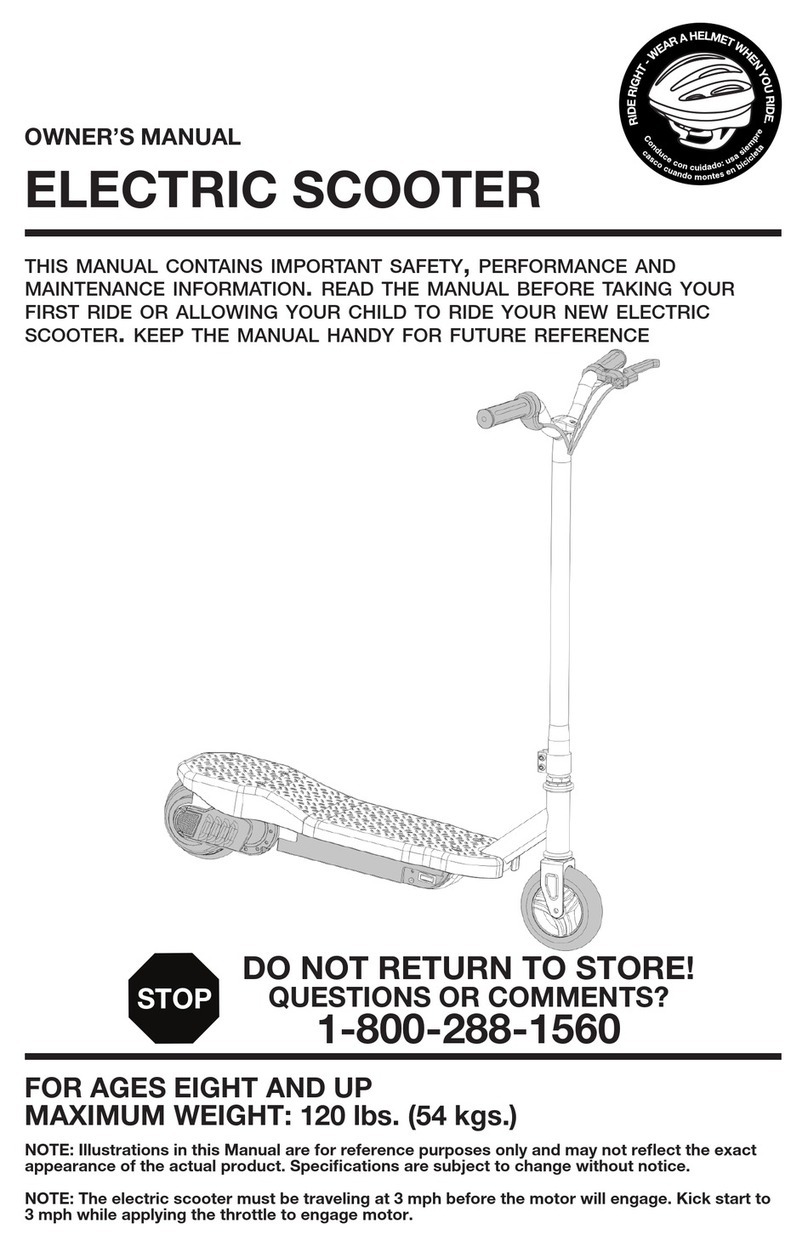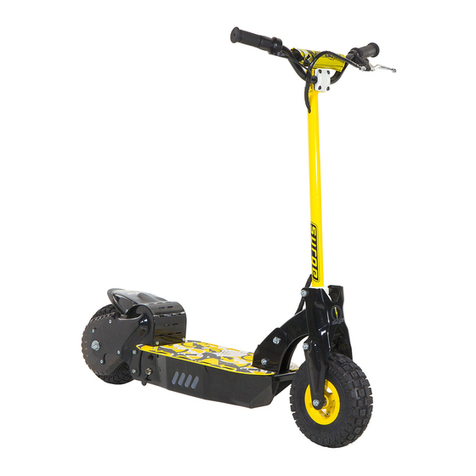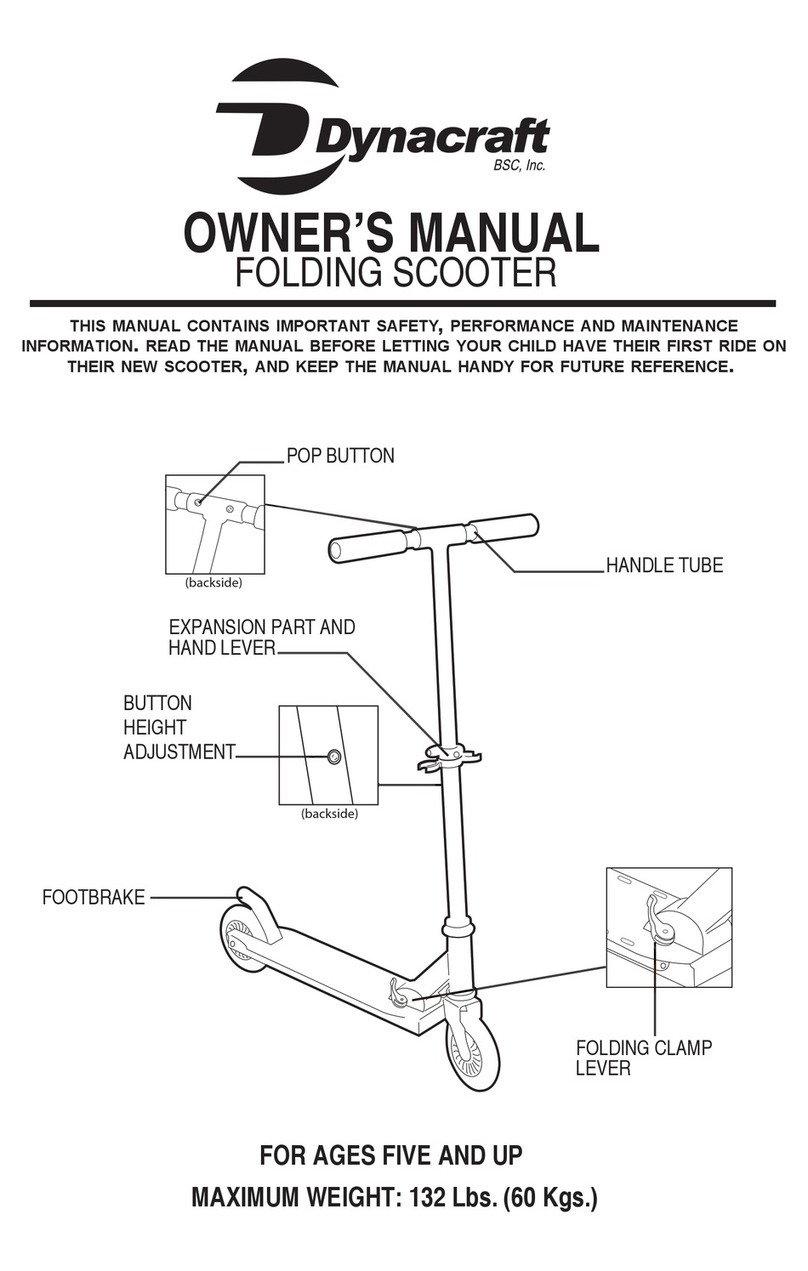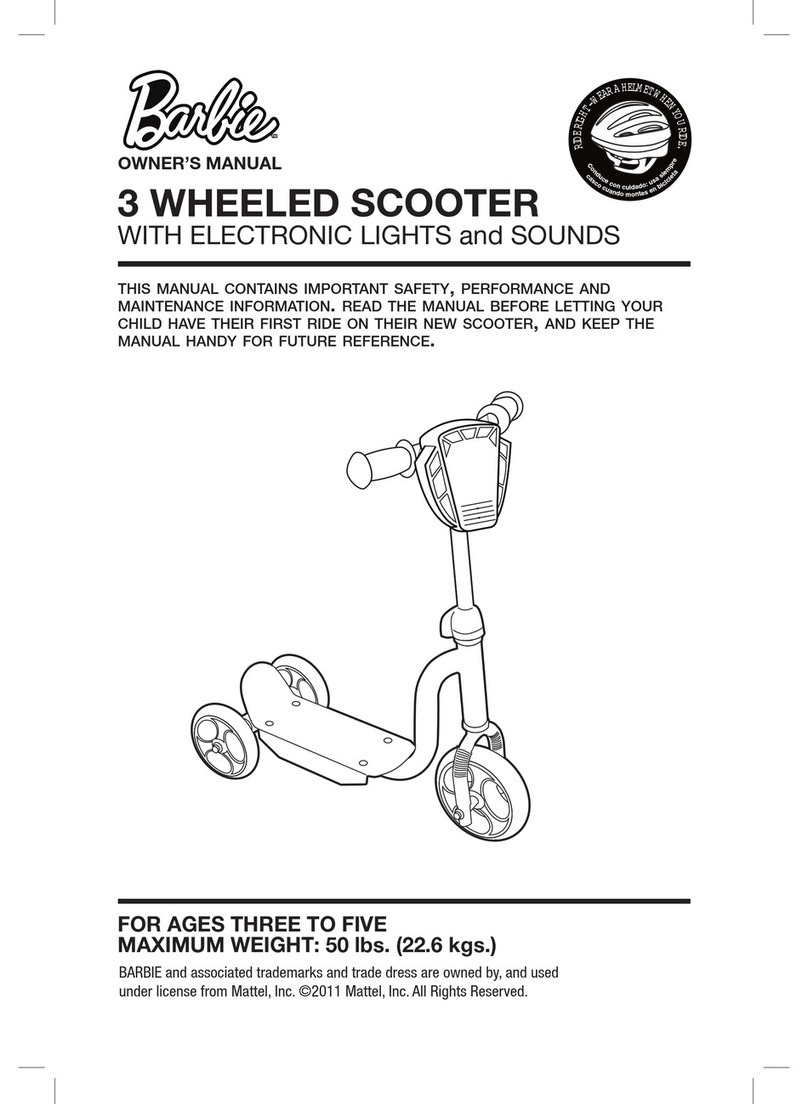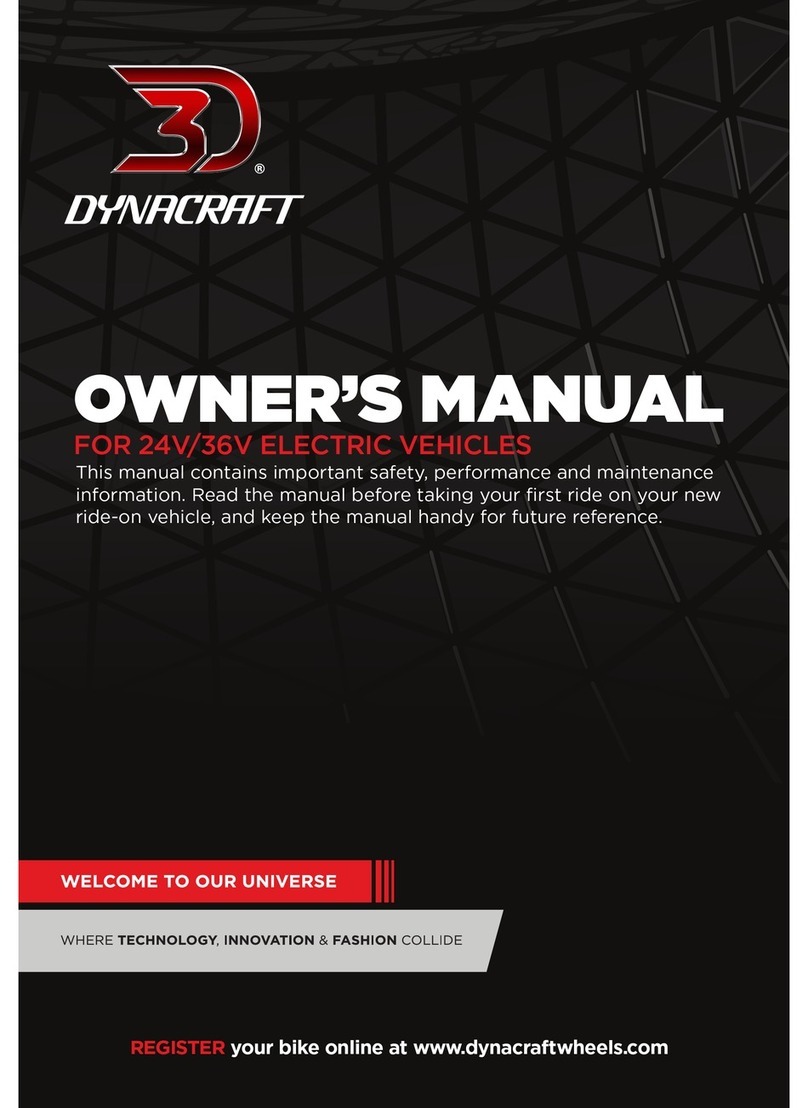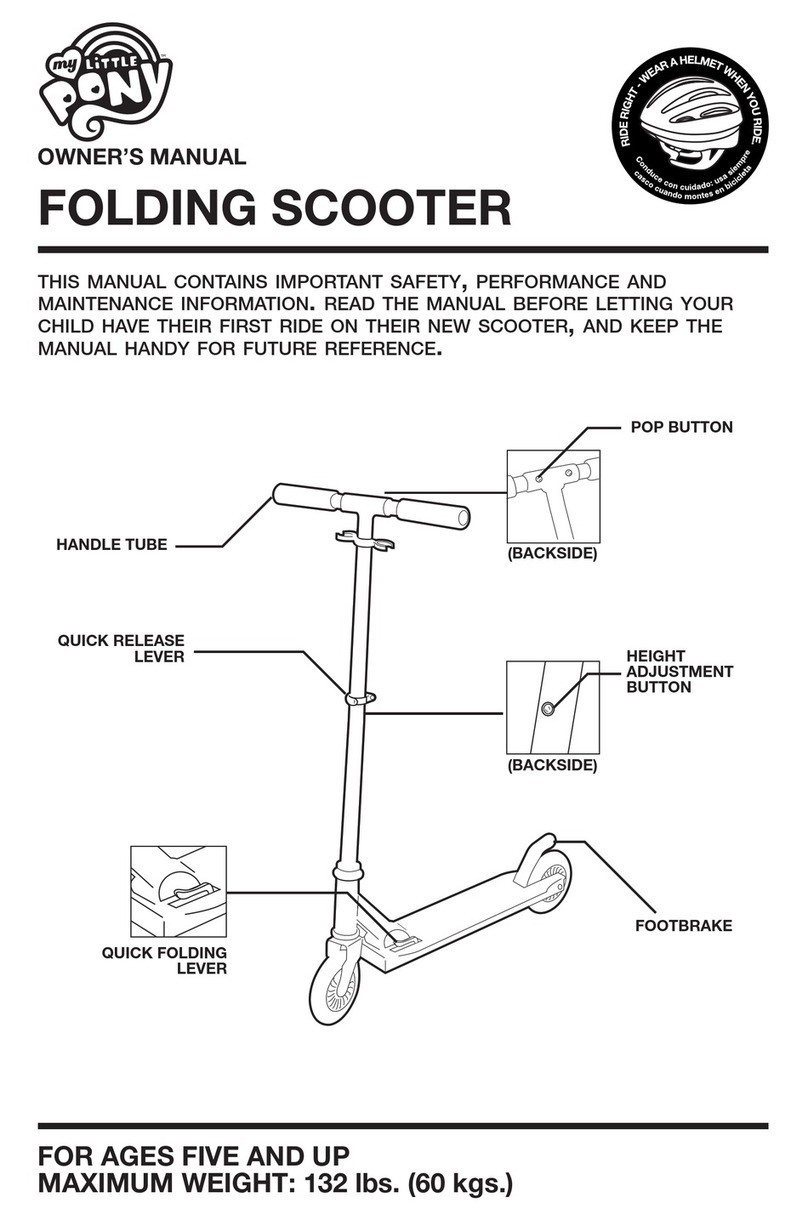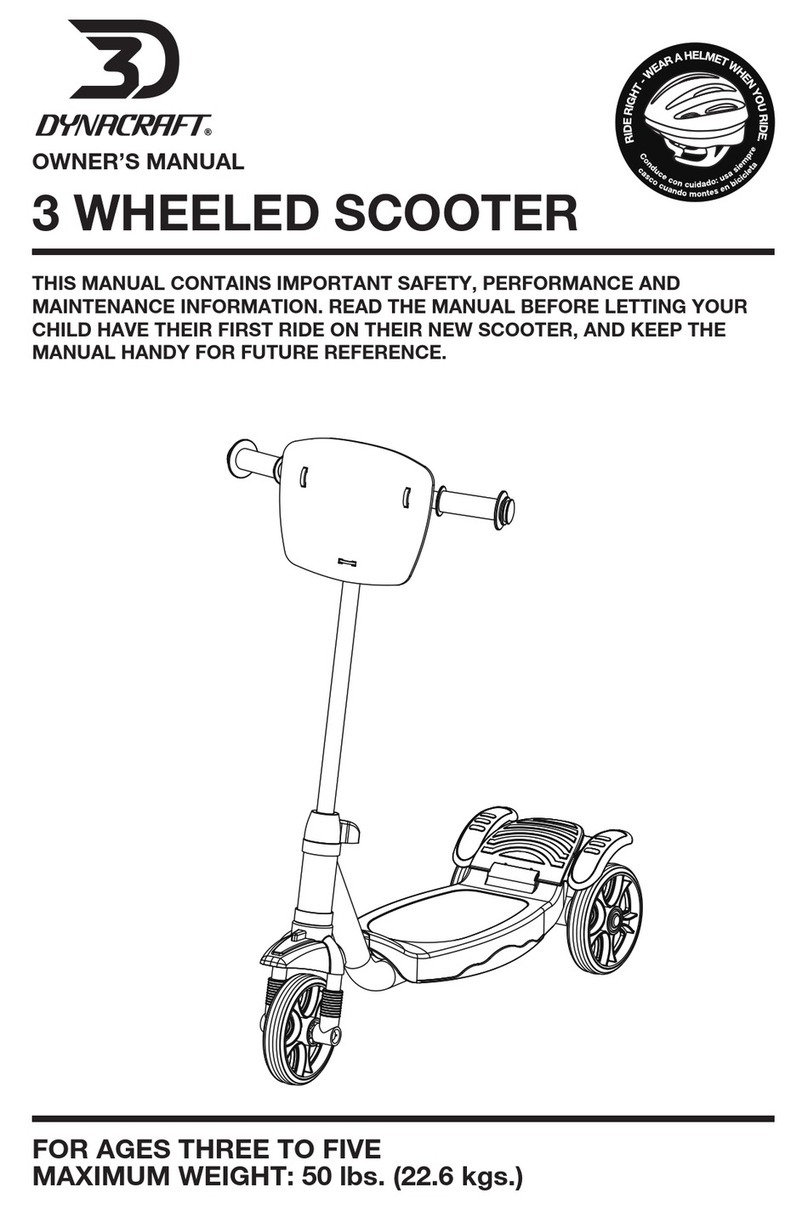4
• Always be alert and ride your off-road electric scooter defensively. Watch out
for obstacles that could catch one of the off-road electric scooter’s wheels or
force you to turn suddenly and/or lose control. Be careful to avoid pedestrians,
persons using other wheeled products (including roller or in-line skates,
skateboards, scooter, bikes, etc.), children or animals who may enter your path.
Always respect the rights and property of others.
• Do not activate the speed control/throttle on the hand grip unless you are on the
off-road electric scooter and in a safe, flat outdoor environment that is suitable
for riding your off-road electric scooter.
• Do not attempt or perform any stunts or tricks on the off-road electric scooter.
The off-road electric scooter is not made to withstand abuse from jumping, curb
grinding or any other type of misuse or stunting.
• Do not ride on ramps, half pipes, skateboard parks, or empty swimming pools.
• Keep both hands on the handlebars at all times.
• Do not touch the motor or brakes on the off-road electric scooter when in use or
directly after use as these parts can become extremely hot.
• Never allow more than one person to ride the off-road electric scooter at one
time and never try to tow anything.
• Do not use near steps, water, or swimming pools.
• Do not ride in wet weather.
• Never immerse the off-road electric scooter in water; electrical and drive
components could be damaged by water or create other potentially unsafe
conditions.
• Keep your fingers and other body parts away from the motor, steering system,
wheels and all other moving components.
• Do not ride while using a cell phone or other electronics or while wearing
headphones.
• Never hitch onto another vehicle or let yourself be pulled or pull anyone or
anything while riding the off-road electric scooter.
• Ride only on smooth, flat, dry surfaces such as pavement or level ground without
loose debris, such as sand, leaves, rocks or gravel. Water, mud, ice, bumpy,
uneven, slick, or rough surfaces could impair traction and contribute to possible
loss of control. Avoid excessive speeds that can occur from downhill rides which
could cause loss of control.
• Do not ride on hills and avoid excessive speed.
• Avoid sharp turns, bumps, drainage grates, and other obstacles.
• Do not ride at night or where there is limited visibility.
• Do not ride indoors or on surfaces that could become damaged such as carpet
or flooring.
• Do not ride on streets, around cars, or in foot or vehicle traffic.
• Regularly check the off-road electric scooter and its components. If any parts
are broken or worn, do not ride the off-road electric scooter until you have fixed
or replaced the broken or worn parts.
• Units shall not be operated to perform racing, stunt riding, or other maneuvers,
which may cause loss of control, or may cause uncontrolled operator/rider
actions or reactions.
